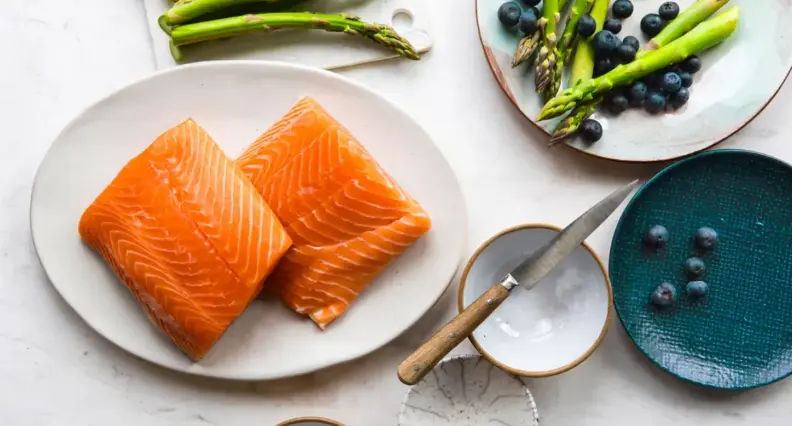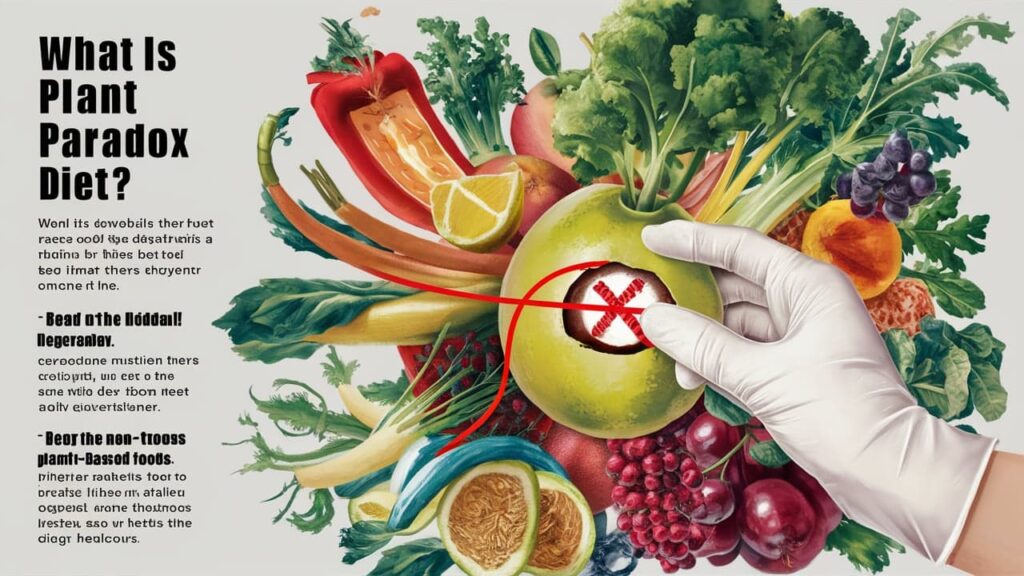What Is the Plant Paradox Diet is It is a diet that avoids food that is naturally high in lectin. Limited foods are cereals; beans and legumes; nuts; fruits; vegetables such as aubergines, tomatoes, and potatoes; and dairy products. Lectin-Free Diet, such as this Diet, aims to lose weight
as well as improve public health, prevent many chronic diseases, such as diabetes, and heart disease, and reduce the incidence of inflammation within the body. and in this article, we’ll know more about it.
What Is the Plant Paradox Diet

The low-lectin diet, known as Pardox Diet, is among the modern dietary trends that have gained increasing prominence in recent years. This diet takes a unique approach by focusing on reducing lectin consumption, which is thought to cause unwanted interactions in some people. And the Basics of Paradox Plant Diet iclude:
- Avoid lectin-containing foods such as legumes (beans, lentils), cereals, some vegetables (tomatoes, eggplants, aubergines), and dairy products.
- Allowed foods( meat, poultry, fish, some vegetables (such as leafy vegetables), and specific fruits (mainly avocado).
- Alleged benefits: weight loss, improved bowel health, reduced inflammation, prevention of chronic diseases.
What is the purpose of a lectins-free diet?
The adoption of a lectin-free diet is based on the principle of limiting the intake of lectin-containing foods which is one of the natural toxins in foods, is a type of plant protein found abundantly in grains, nuts, legumes, whole grains, some vegetables, and fruit, so that they exist with plants to protect them from animals they can devour, but this substance may have a risk to the body’s health.
There is also a type of lectin called ricing that can be fatal if taken even in small quantities.
Phytohemagglutinin, which is abundantly available in red beans, can lead to intoxication, among its most common symptoms, severe nausea, vomiting and diarrhoea.
Other kinds of gastrointestinal gastroenterology adversely affect digestion, as they are associated with the cells lining the gastrointestinal wall and some nutrients, which impede their absorption. Nevertheless, there is nothing in scientific research to support a lectin-free diet yet.
Strictly following this diet may result in deprivation of some important elements of the human body. Although studies on this diet are frequent, its effectiveness depends on the level of accumulation of lectin in the body.
What is lectin?
Lectin is generally known as a protein found in milk and its products, and is sometimes referred to as the cause of allergies in some people. When these people eat foods that contain large amounts of lectins, they may experience a variety of symptoms such as gases, bloating, and diarrhea.
What Is the Plant Paradox Diet include?
Following a lectin-free diet or Plant Paradox Diet in three basic phases:
The first stage of a lactin-free diet
The first phase of any lactin-free diet system depends on the loss of some kilograms, down to normal weight, as this phase lasts up to six weeks.
Within the first two weeks, diet instructions should be strictly followed, focusing on protein, vegetables, healthy fats allowed by the system, as well as the importance of stopping eating cereals, starchy vegetables, fruit and sugar, while during the third week you can go back to eating fruit, cereals, gradually.
Second stage of lactin-free diet
The second stage of a lactin-free diet is the restoration phase, where high-calorie foods are replaced by low-calorie foods. This phase is designed to promote a lasting change in dietary habits, by increasing the intake of green leafy vegetables, and reducing the proportion of animal protein, cheese, cereals, and legumes.
This stage of diet lasts from the seventh to the twelfth week at a minimum, but paradox diet recommends committing to this stage until the achievement of healthy weight.
Phase III lectin-free diet
It is the final phase of the What Is the Plant Paradox Diet, which lasts for life, and through it urges paradox to return to the ancestral diet, which is free of animal protein and dependent on raw wild plants.
rules of Plant Paradox Diet

here are the main rules of Plant Paradox Diet which we should know if we want to know What Is the Plant Paradox Diet:
- Reduce milk and its derivatives: Milk is a rich source of lactin, so its consumption should be reduced or replaced with lectin-free alternatives such as almond milk, coconut milk.
- Whole grains and legumes with caution: Some whole grains and legumes contain small amounts of lectin, so it is preferable to eat them carefully according to the individual’s tolerance.
- Focus on fresh foods: Fresh and natural foods are often lectin-free, so it is preferable to eat them regularly under Custom Keto Diet 2023.
recommended food in plant paradox diet:
Depending on this diet, any lectin-free food can be eaten, but even healthy foods such as fruit and vegetables contain lectins, preventing them from being eaten. Some recommended foods in the lectin-free diet will be explained below, disaggregated by food groups:
Vegetables
- cauliflower.
- broccoli.
- Exipure
- Onion.
- garlic.
- Chives.
- Beetroot.
- The ground is a fork.
- Radish.
- Okra.
- Asparagus.
- Fast Lean Pro.
Fruit
- Avocado.
- All kinds of berries.
Benefits of plant Paradox Diet
Some people also ask What Is the Plant Paradox Diet benefits and here are the main benefits of it
- Improving digestion: By reducing lectin in the diet, people with lectin allergies can feel better in digestion and reduce associated symptoms.
- Increased physical comfort: Some people may notice an increase in energy levels and physical comfort when following a low-lectin diet
Read more: The Menopause Diet 5 Day Plan to Lose Weight
Potential dangers of Paradox plant diet

Despite the alleged benefits of Paradox plant diet, they may involve some risks and disadvantages:
- The diet’s focus on a limited range of foods may lead to a shortage of some important nutrients, such as calcium, vitamin D, fiber, and vitamin B12.
- Difficulty in obtaining alternative nutrients: It may be difficult to obtain some nutrients from alternative sources allowed in the diet, which may require dietary supplements.
- Some people may find it difficult to adhere to strict dietary restrictions for the long term diet, which can lead to frustration and abandonment.
- Following a diet may face challenges in social situations, such as eating with family or friends, where food choices may not conform to diet constraints.
- Dieting for a long time may lead to protein deficiencies, especially for people who do not eat enough meat or other protein alternatives.
- Some people may have digestive problems, such as bloating or diarrhea, due to increased intake of raw vegetables or fibre-rich foods.
- Certain foods permitted in the diet may interact with certain medications, requiring consulting a doctor before following them.
In conclusion, we reviewed What Is the Plant Paradox Diet, but you should know that this diet remains one of the nutritional choices that people can consider if they have lectin allergies or are looking for a way to improve their overall health.

